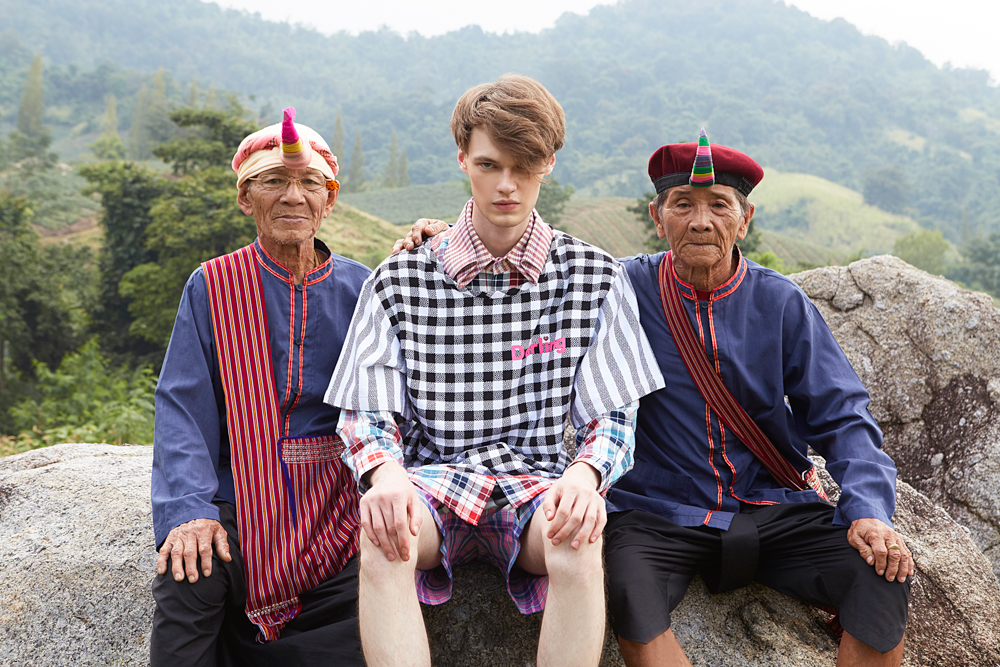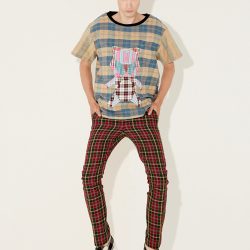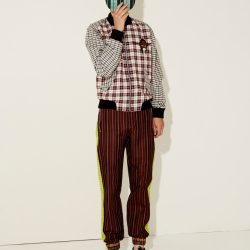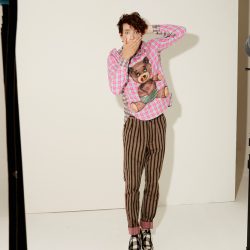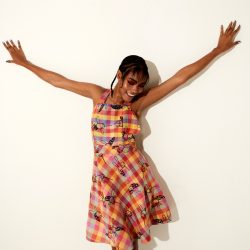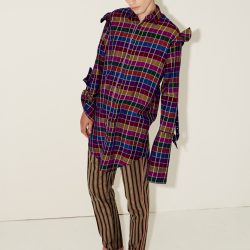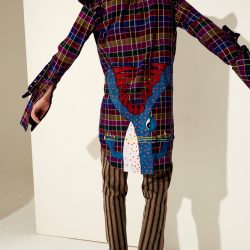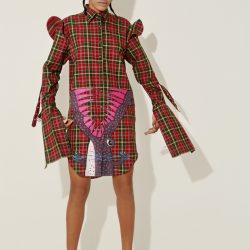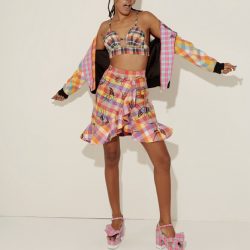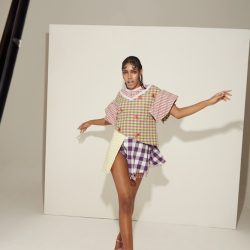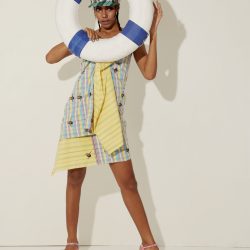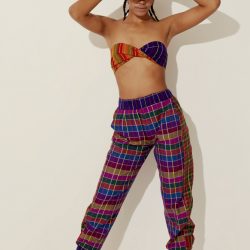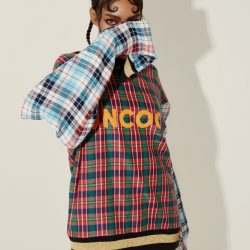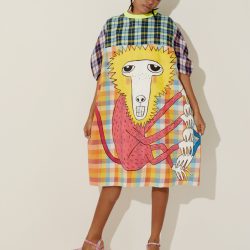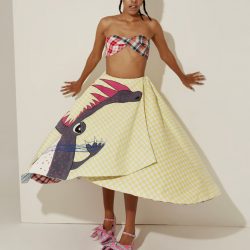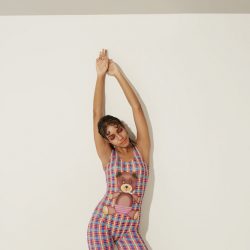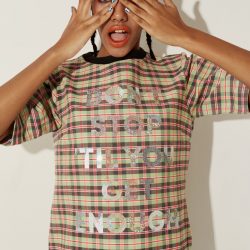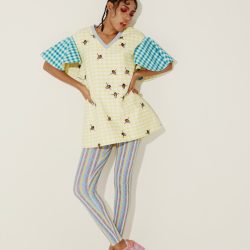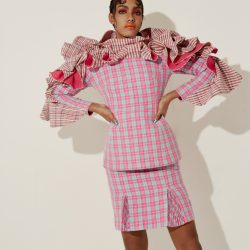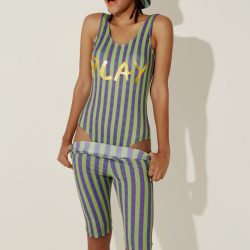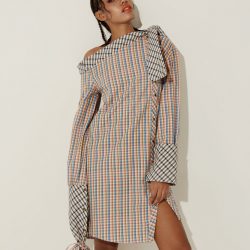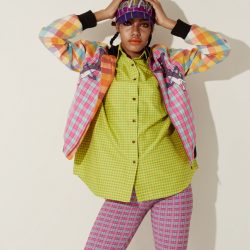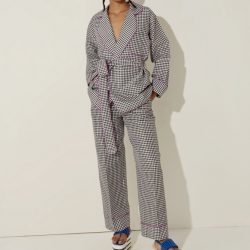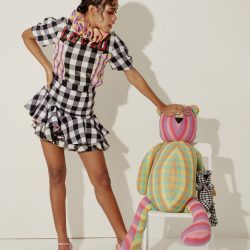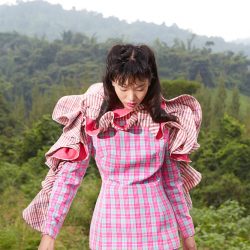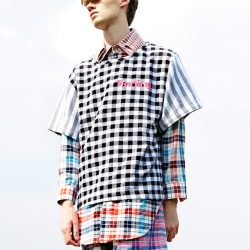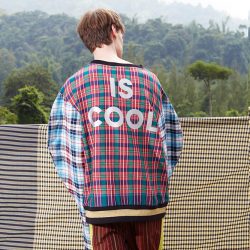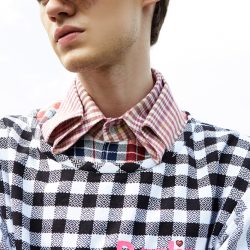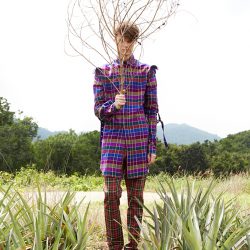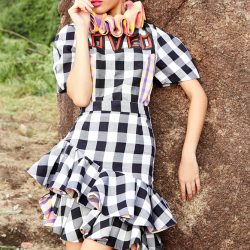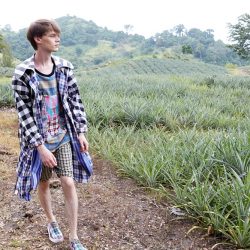LALALOVE HAS SLIGHTLY DECONSTRUCTED ‘PAKAOMA’ INTO A FRESH LOOK FOR STREETWEAR.
Those who have never known may wonder why ‘Pa-Kao-Ma,’ the multifunctional cloth Thai people have always seen in everyday life, is given such name (in Thai ‘Pa’ means cloth, ‘Kao’ is the color white while ‘Ma’ is horse), considering its checkered pattern whose color is far from white and has nothing to do with any horse. The answer is that the cloth has its own history dating back to hundreds of years ago with its name that is actually derived from ‘Kamar Band,’ of the Persian language meaning a broad waist sash.
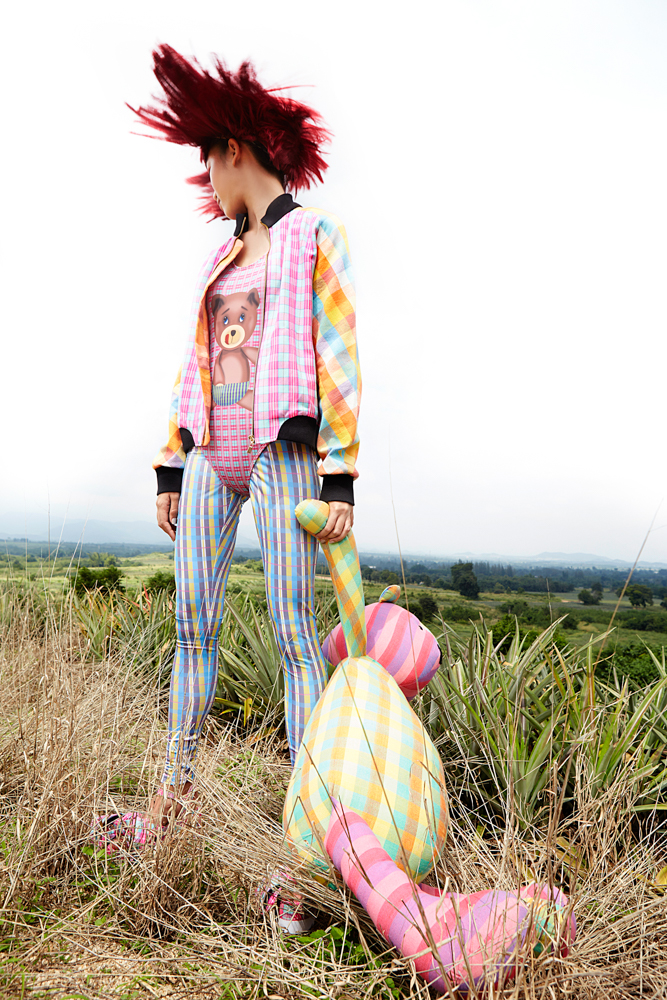
Images courtesy of Lalalove
Despite the popularity of the Pa Kao Ma, which has been used by generations of Thai people for many functions from tying the cloth around heads and waists and wrapping packages to using it as a hammock for a baby by tying it to the poles of a stilt house, this multipurpose textile is often regarded as a mundane household item. It has never been considered a legitimate piece of clothing that people wear outside of their homes. While there have been brands that attempt to adapt Pa Kao Ma into contemporary ready-to-wear fashion, the clothes made from such fabric is still categorized as ‘casual’ instead of stylish streetwear…but today is a new day—the time when Pa Kao Ma has finally been given a new status.

Images courtesy of Lalalove
Lalalove is a fashion brand known for its vibrant use of colors and striking prints. Under the artistic direction of designer and stylist, Linda Charoenlarp, the recently launched LALALOVE X PAKAOMA is another line of products that primarily uses the famous Thai loincloth in the creation of a streetwear collection for both men and women featuring everything from spaghetti strap dresses and dress shirts to matching sets of blouses and skirts, pants, coats and bombers. Both monochromic and colorful checkers of loincloths are integrated under deconstructed patterns with decorative elements of drapes, Elizabethan collars and complemented with cool wordings or illustrations of characters such as the adorably cheeky looking crocodile and bear.
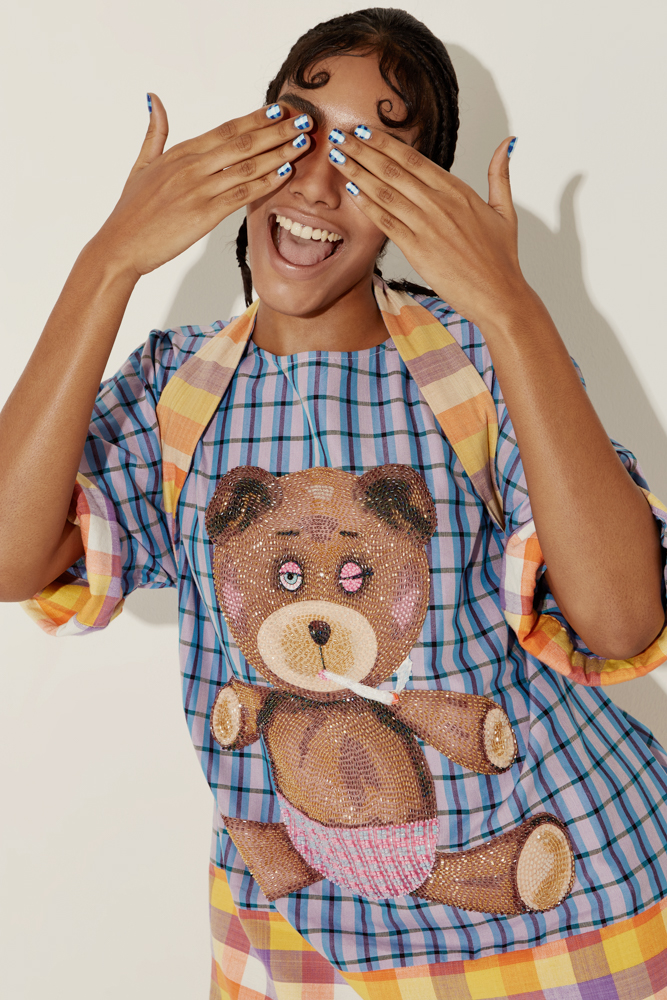
Images courtesy of Lalalove
Linda recalls the birth of the project when the brand was approached by the Public-Private Collaboration. This network of collaborators was initiated with the objective of facilitating the creation and operation of social enterprises through public and private collaborations whose aim is for people to use their skills and wisdom to generate income and become self-sufficient. “Initially, the Public-Private Collaboration contacted us because they wanted to organize a fashion show for the Loy Kratong festival with the brief being that we had to come up with a clothing line using Pa Kao Ma as the key material. We were very interested in the project but we were also thinking about the possible development of the product after the show ended and how it could be ramified and actually turned into an actual ready-to-wear collection so we asked the Collaboration to help us with research in which we were taken to different villages where these cloths are made. We went to tens of villages; some of which are unreachable by cars so we had to walk for quite a distance to meet with the senior ladies who create the loincloths. We later realized that the making of one piece of loincloth is not at all easy and began to value every aspect of this great craft. Such realization became such an inspiration for us to do the best we could with the project. We suggested that the Public-Private Collaboration not end the project with the fashion show only because if that were the case, the people who make these cloths would end up getting paid 5,000 bath and that would be it, while we could develop the show into an actual collection, create a nice lookbook and make the products marketable in both Thailand and foreign countries. We wanted it to be like a capsule collection with potential in the global market because if the products sell, the people who make these cloths could get paid more. The Public-Private Collaboration agreed and the collection was born.”

Images courtesy of Lalalove
Another turning point of the project was the passing of King Bhumibol Adulyadej that caused the Loy Kratong Festival to be canceled. Having already worked on the collection, the designer of Lalalove decided to pursue the project and sent over the finished works to a PR agency in Japan. With positive feedback, LALALOVE X PAKHAOMA received an invitation to participate in the upcoming Tokyo Fashion Week on the 20th of March 2017 with the launch of the collection’s showroom at the event as a collaborative project with The Public-Private Collaboration. “We tried to figure out a way to make buyers see and pick up our products. We have achieved 50% of our objective because at the very least, we get to see Thailand’s Pa Kao Ma, the product of such incredible effort from everyone involved, being introduced to the international fashion world. The next dream we are after is for the collection to be selected by multibrand shops in big cities across the world. It’s one step at a time, maybe we’ll start with two or three shops at the beginning.”
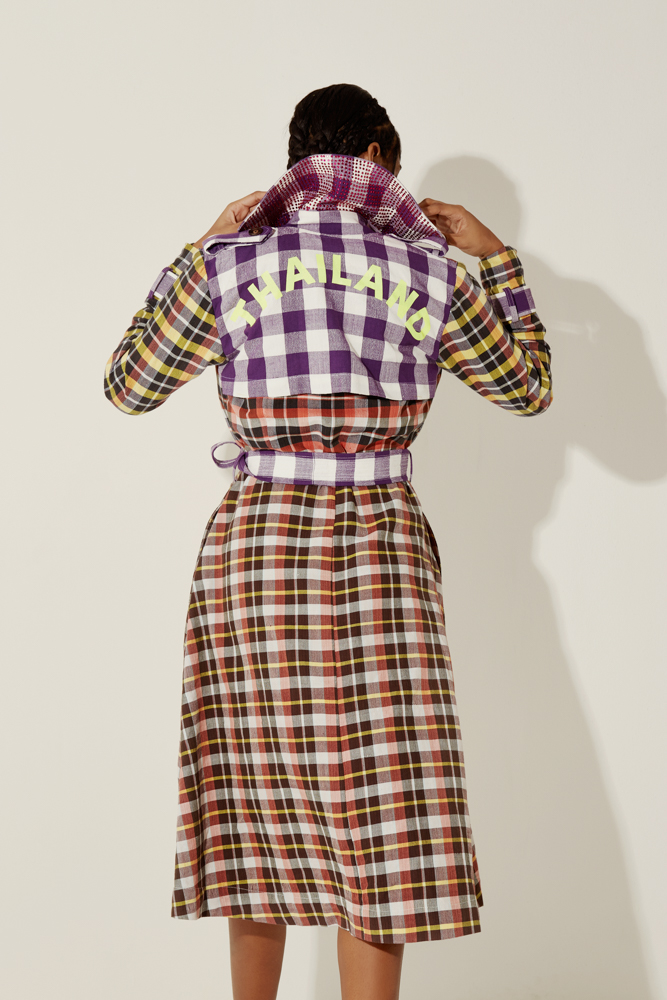
Images courtesy of Lalalove
“The first feeling when I was given the brief that I had to use Pa Kao Ma for the design of the clothes was that it would be very challenging, but I didn’t know anything much about the material. I knew that they were cloths with white, red and blue checkers but after I studied further I found out that loincloths from different localities are varied by the materials available within the area, from yarns made from pineapple and lotus roots to the diversity of colors that range from neon and pastel to the red that comes from red bricks. I had the opportunity to learn about weaving techniques, the number of threads required and the specific width of the cloth which is determined by the size of the loom. I never tell them how to do their craft or what I want the cloths to look like. I choose the existing products and use them in my design. It’s a twist from what I normally do with other collections because the process usually starts with a concept, and then the fabric selection, but for this one, I knew that there was this fabric that I needed to use before I actually started the design. Working with these great people, I realized the value of each cloth. I was used to ordering a whole bunch of fabric from factories or China and that was it. The loincloths remind me of their origins, of the grandmothers who create these magnificent pieces of craft whom I talked to. There’s mental and emotional value to it.”
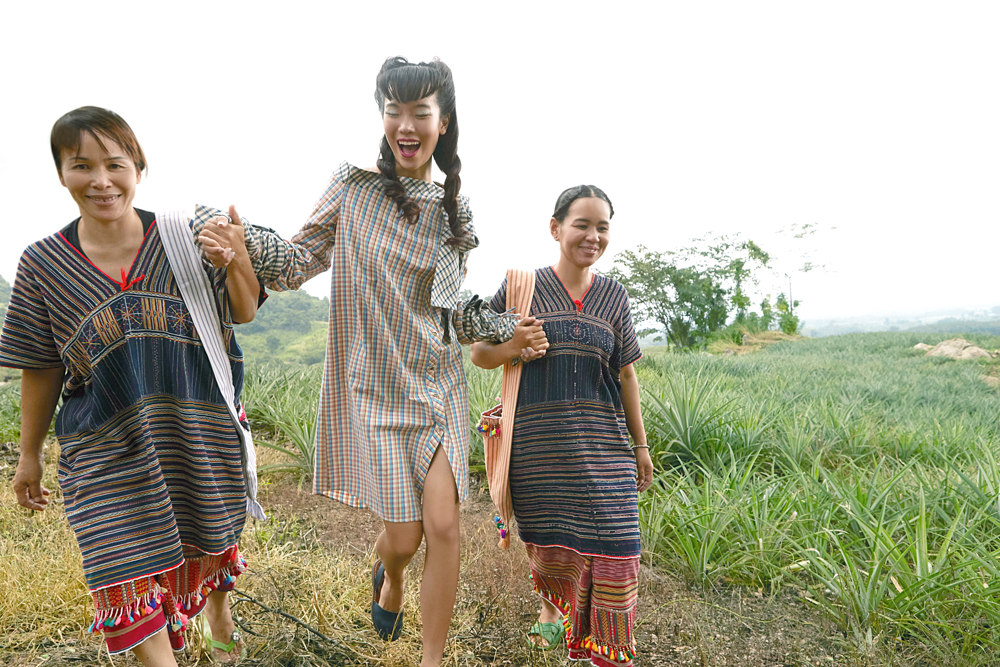
Images courtesy of Lalalove
In terms of design, Linda emphasizes that Lalalove never compromises when it comes to style. Despite the preconceived notion of loincloth, especially among Thai users, Lalalove gives it all of their uniqueness with ‘PLAY’ being the inspiration behind the collection. The designer aims for the final work to bring about positive feelings, reminiscent of and celebrating the spirit of childhood. The word ‘PLAY’ is interpreted as a collaborative experience where fun is shared as such notion leads Lalalove to invite artists to collaborate with the brand such as Futon’s bassist / artist, Oh, who created idiosyncratic characters engaging in traditional children’s games from crocodiles playing a string game and elephants enjoying a game of Humming and Tagging (Kabaddi) to a buffalo throwing stones. The illustrations are turned into embroidery patterns or screened on the fabric. The project also welcomes artist, Pongsoung Khunprasop, to be in charge of the collection’s graphic work.
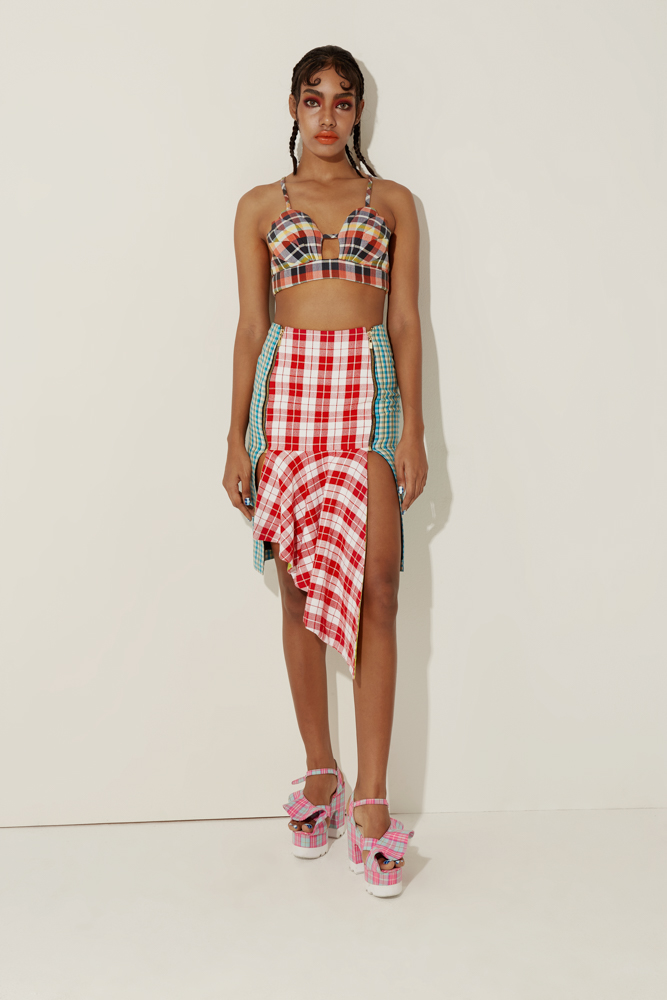
Images courtesy of Lalalove
“Every single piece of cloth is a product where incredible attention is given to the details. Each piece has its own serial number with a certificate stating the origin of each cloth. The patterns are not too flashy to wear in everyday life but the element of fun is there. 90% of the fabrics we use are loincloths but we incorporate lycra as an additional material because Lalalove’s signature is that every collection contain swimsuits and leggings but we still use Pa Kao Ma patterns in the design. The pieces in the collection range from ready-to-wear clothes for everyday life, which are easy to wear and market, but we also provide a service for clients who want made-to-order sizes or colors. We’re very flexible because we want people to wear our clothes. We want Thai people to see something different. The preconceived notion that Thai textiles are out of date, impractical and only for old people to wear to temples or very formal events is being challenged. We want people to see and appreciate this craft that has been a part of our culture for as long as we can remember, as well as the value and sustainability it possesses.”
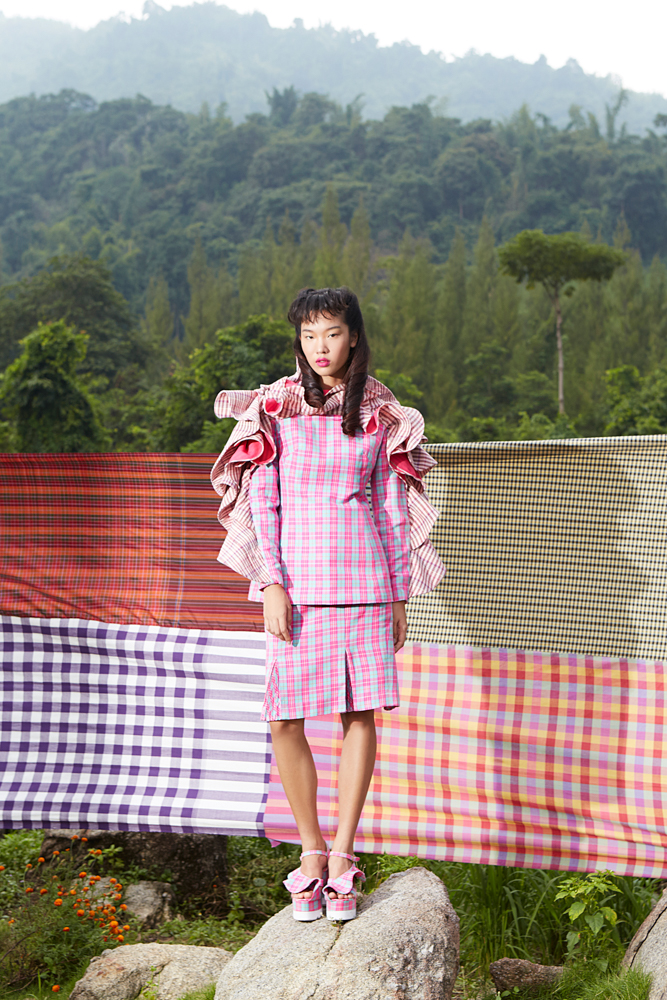
Images courtesy of Lalalove
“Right now, what we want to see happen is for Pa Kao Ma to be more recognized and appreciated in the international market. We want for everyone to see how and what this Thai cloth can create and become. We want Thai people to look back and appreciate this great thing that we have. If the feedback is positive, the money will go back to the people and the villagers who create these cloths. To us, that’s a success. There are so many local wisdoms and crafts that are the perfect resources of creativity. In addition to Pa Kao Ma, we still have Thai silk, Madmee silk, Batik and so on to work with. In the future, Thailand may have more designers who work with local creators, craftsmen and women in the development of local products and maybe, who knows, we might get to see Thai fabric make their appearance at the Fabric Fair in Paris one day.”
See more of the Lalalove X Pakaoma collection at Thai Designer Zon, 2nd Floor, Emquatier Shopping Mall and 3rd Floor, Siam Center.
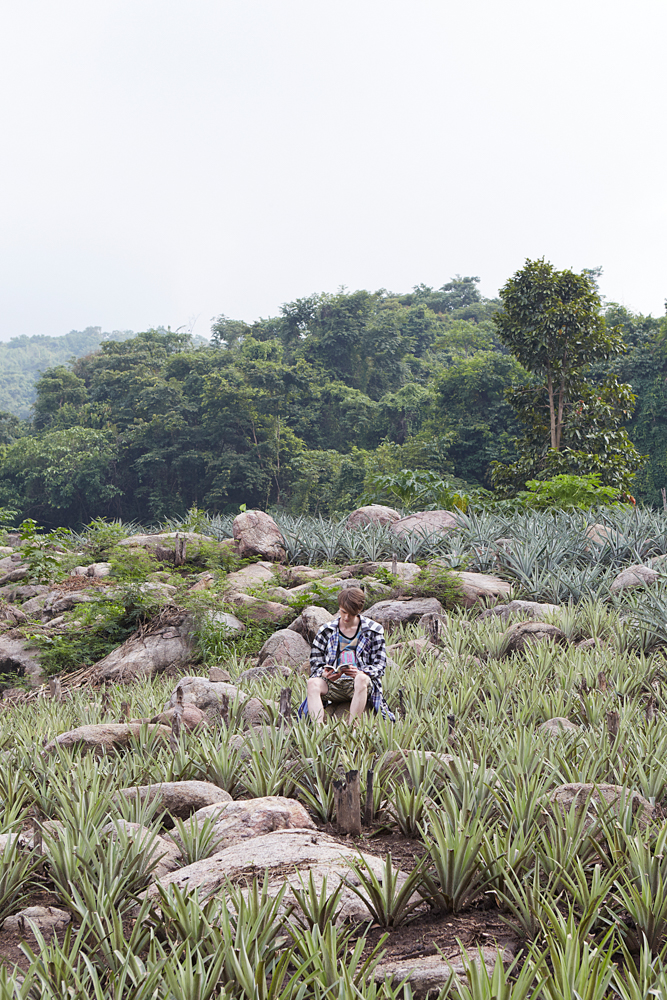
Images courtesy of Lalalove
TEXT: ORE TITIMA
www.lalaloveworld.com

